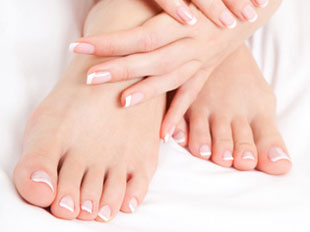Scratching the Surface
 Whether you bite, tap, or polish them, your nails serve a purpose that goes beyond nervous habits and decorative flair. Nails protect the tips of fingers and toes, while helping you pick things up. And let’s face it, what do you call on when you have a nagging itch?
Whether you bite, tap, or polish them, your nails serve a purpose that goes beyond nervous habits and decorative flair. Nails protect the tips of fingers and toes, while helping you pick things up. And let’s face it, what do you call on when you have a nagging itch?
Your nails can also reveal your overall health — cluing you into ailments like diabetes, melanoma, and anemia. So as your nails care for you, make sure you reciprocate.
- Avoid biting your nails — it can damage the keratin and cause hangnails, which can lead to infection.
- Never remove cuticles — they help protect the nail bed.
- If you get frequent manicures and pedicures, consider bringing your own instruments.
- Clean and trim nails regularly. Keep them square shaped with a slight curve at the edges.
- Watch for changes in color or texture. Slow–growing, yellowish nails that thicken or cave in can be a sign of lung disease. White nails can be a symptom of liver conditions like hepatitis. Pitting or rippling of the nail can point to arthritis or psoriasis. Yellow nails with a pink undertone at the base can indicate diabetes. And dark lines beneath the nail can signal melanoma. Pay attention to the ridges as well. Vertical lines aren’t a problem, but horizontal lines can sometimes point to a metabolic condition.

